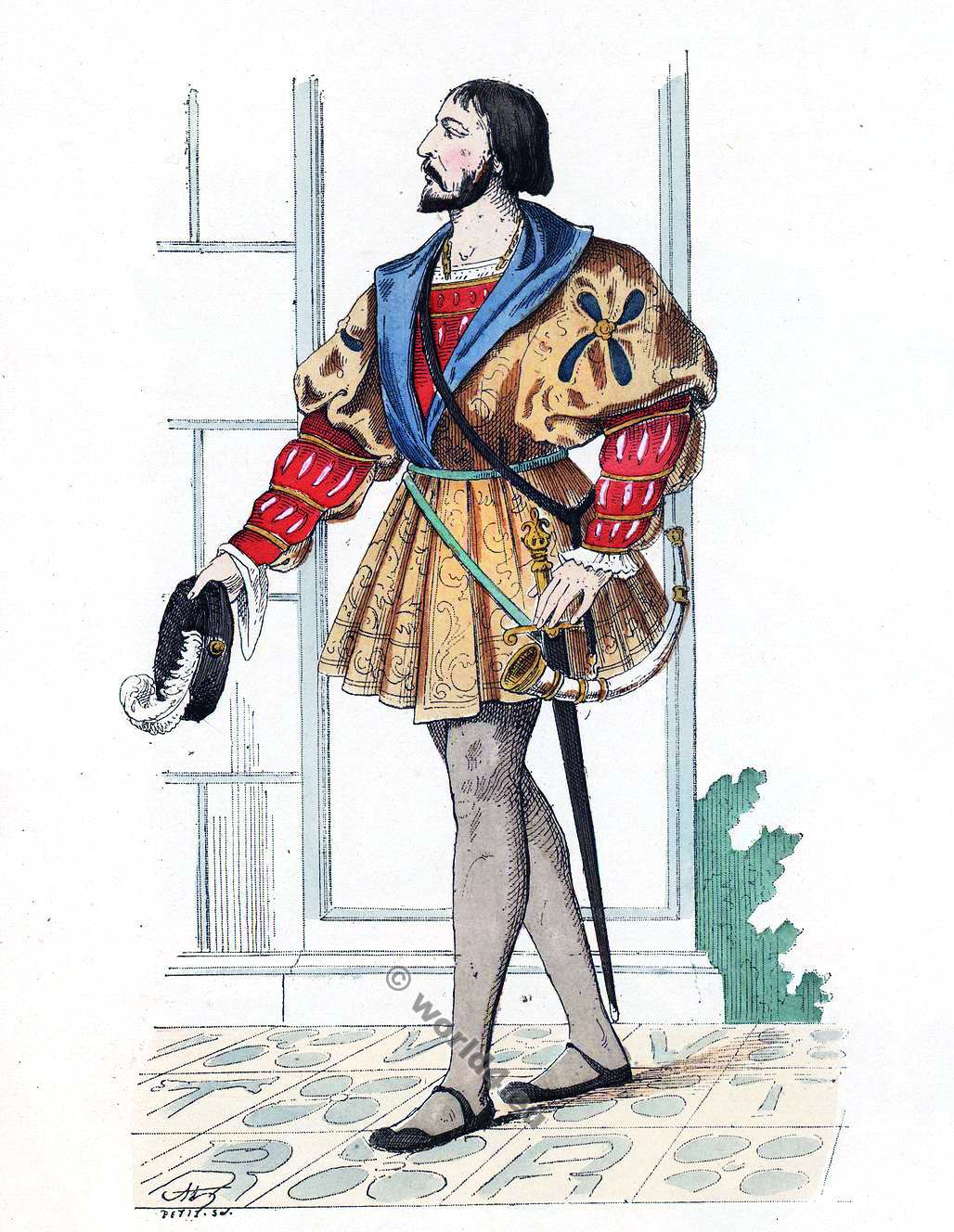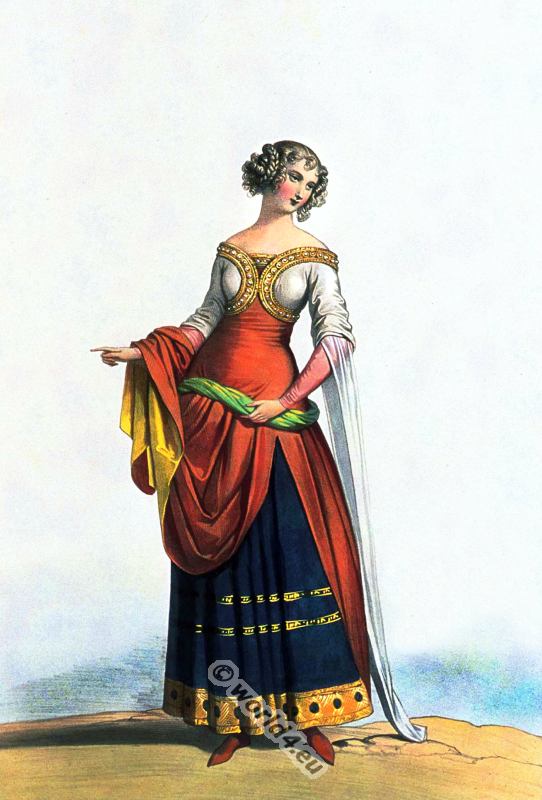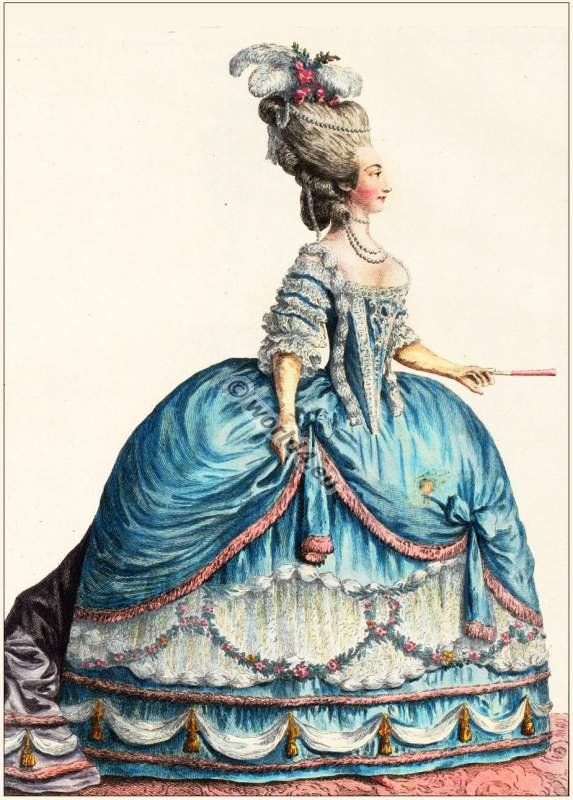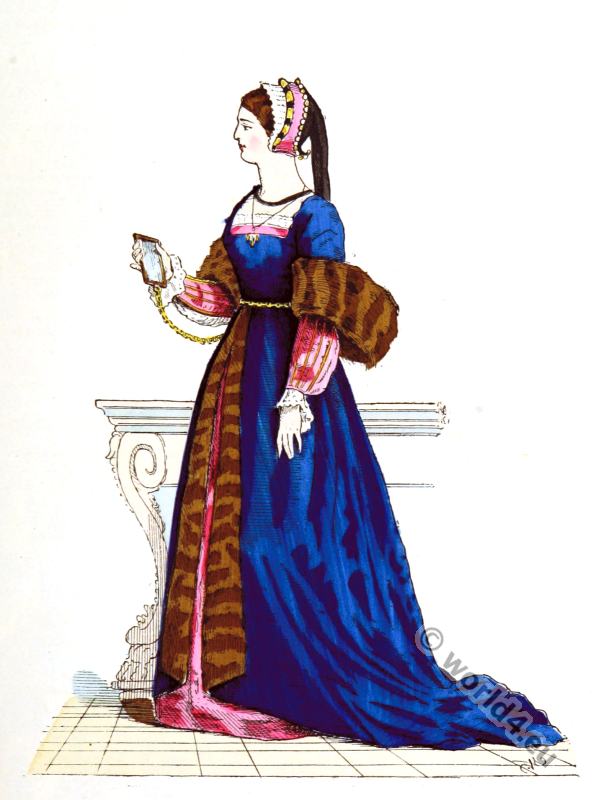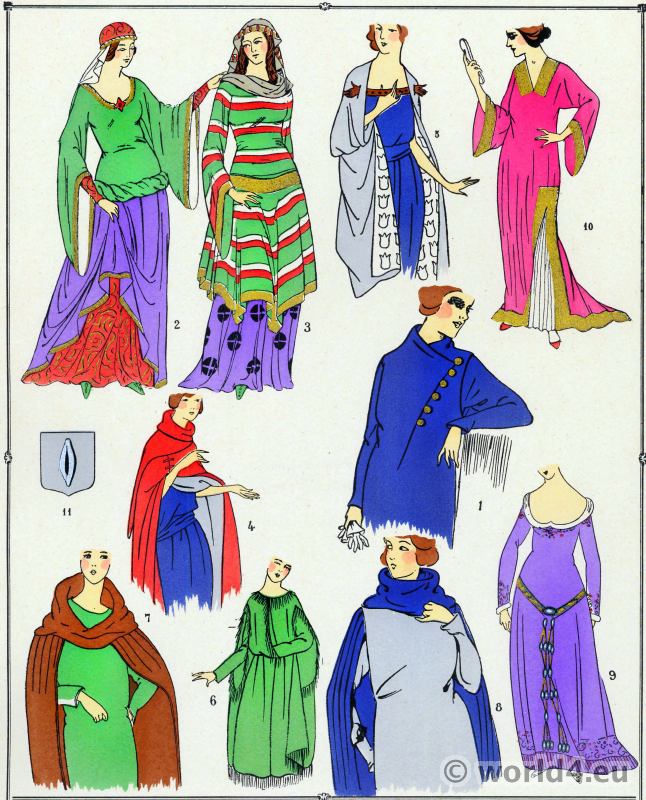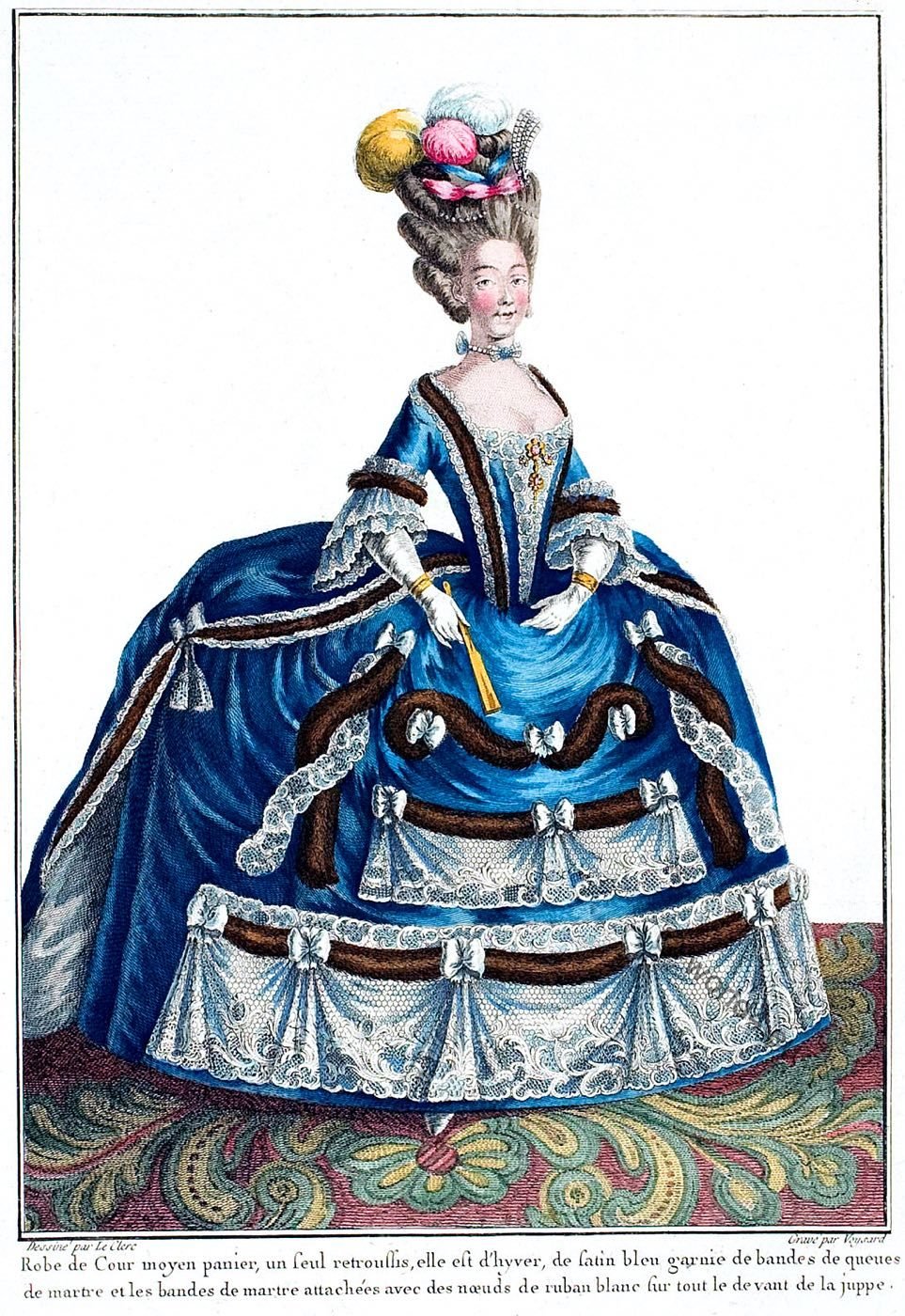
Marie-Josephine Louise Bénédicte of Savoy, Princess of Savoy and, through her marriage, Countess of Provence and wife of the pretender to the throne of France, was born in Turin on September 2, 1753 and died at Hartwell House (Hartwell, Buckinghamshire, United Kingdom) on November 13, 1810. Wife of Louis-Stanislas-Xavier of France, Count of Provence and future Louis XVIII, she escaped the French Revolution and ended her life in exile.
LA COMTESSE DE PROVENCE.
Né au début du XVIIIe siècle, l’usage des paniers commença à disparaître du costume de ville sous Louis XVI, mais fut conservé jusqu’à la un du règne pour les costumes de cour auxquels il procurait une majestueuse ampleur. Les paniers comportaient trois ou quatre rangs de cerceaux, reliés par une toile ou même simplement par des liens qui leur conservaient la forme elleptique.
On en voit un, à trois rangs, sous le bras de la couturière qui est figurée sur la planche 25). Certains étaient articulés; on les ramenait à droite et à gauche sous le bras pour entrer dans les chaises à porteurs ou passer clans les portes étroites.
Il y avait des moyens et des grands paniers; ces derniers étaient de telles dimensions que les bras étendus n’en atteignaient pas l’envergure.
Source: Galerie des Modes et Costumes Français Dessinés d’Apres Nature 1778-1787. Réimpression accompagnée d’une préface par M. Paul Cornu. Émile Lévy, Éditeur. Librairie centrale des beaux-arts 1912.
Related:
Related
Discover more from World4 Costume Culture History
Subscribe to get the latest posts sent to your email.

